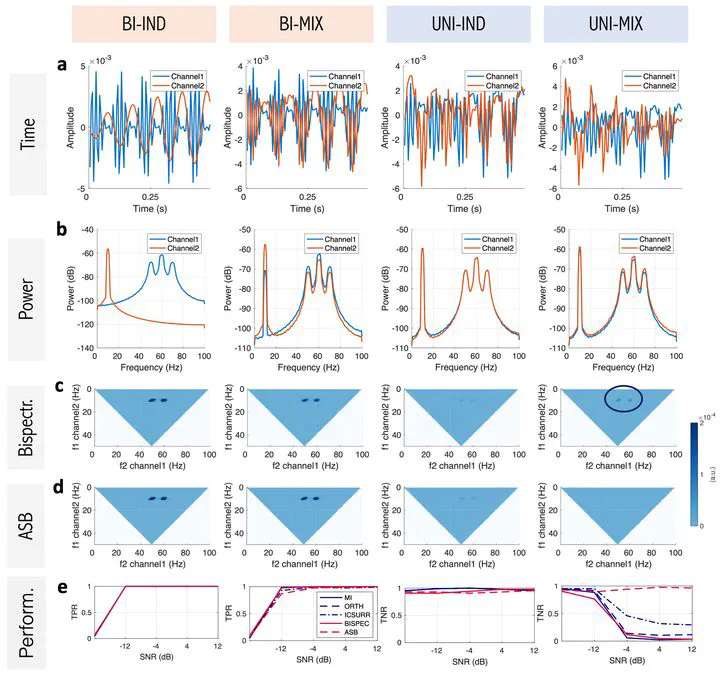Distinguishing between- from within-site phase-amplitude coupling using antisymmetrized bispectra
Oct 1, 2023· ,,,,·
0 min read
,,,,·
0 min read
Franziska Pellegrini
Tien Dung Nguyen
Taliana Herrera
Vadim Nikulin
Guido Nolte
Stefan Haufe
 Image credit:
Image credit:Abstract
Phase-amplitude coupling (PAC) is a form of cross-frequency coupling in which the amplitude of a fast oscillation is locked to the phase of a slow oscillation. PAC has been proposed as a mechanism for integrating slow large-scale networks with fast-oscillating local processes in the brain. On a signal level, PAC can be observed in single time series, reflecting local dynamics, or between two time series, potentially reflecting a functional interaction between distinct brain sites. To investigate the role of PAC as a mechanism of brain signalling, it is important to distinguish these two cases. However, when mixtures of underlying signals are observed, between-site PAC can spuriously emerge even if the true interaction is only local (within-site). This problem arises in electrophysiological recordings where mixing occurs due to volume conduction or the presence of a shared electrical reference. To address this problem, we propose to estimate PAC using the anti-symmetrized bispectrum (ASB-PAC). It has previously been shown that the cross-bispectrum can be used to measure PAC while efficiently sup-pressing Gaussian noise, and that the anti-symmetrized bispectra vanish for mixtures of independent sources. However, ASB-PAC has so far not been used to assess the presence of genuine between-site PAC. Using simulations, we here investigate the performance of different algorithms to detect PAC in a mixed signal setting as well as the performance of the same methods to distinguish genuine between-site PAC from within-site PAC. This is done in a minimal two-channel setup as well as in a more complex setting that assesses PAC on reconstructions of simulated EEG sources. We observe that bispectral PAC methods are considerably better at detecting simulated PAC in the volume conduction setting than three conventional PAC estimators. ASB-PAC achieves the highest performance in detecting genuine between-site PAC interactions while detecting the fewest spurious interactions. Using the ASB-PAC could therefore greatly facilitate the interpretation of future PAC studies when discriminating local from remote effects. We demonstrate the application of ASB-PAC on EEG data from a motor imagery experiment. Additionally, we present an upgraded version of the free ROIconnect plugin for the EEGLAB toolbox, which includes PAC and ASB-PAC metriscs based on bispectra.
Type
Publication
bioRxiv